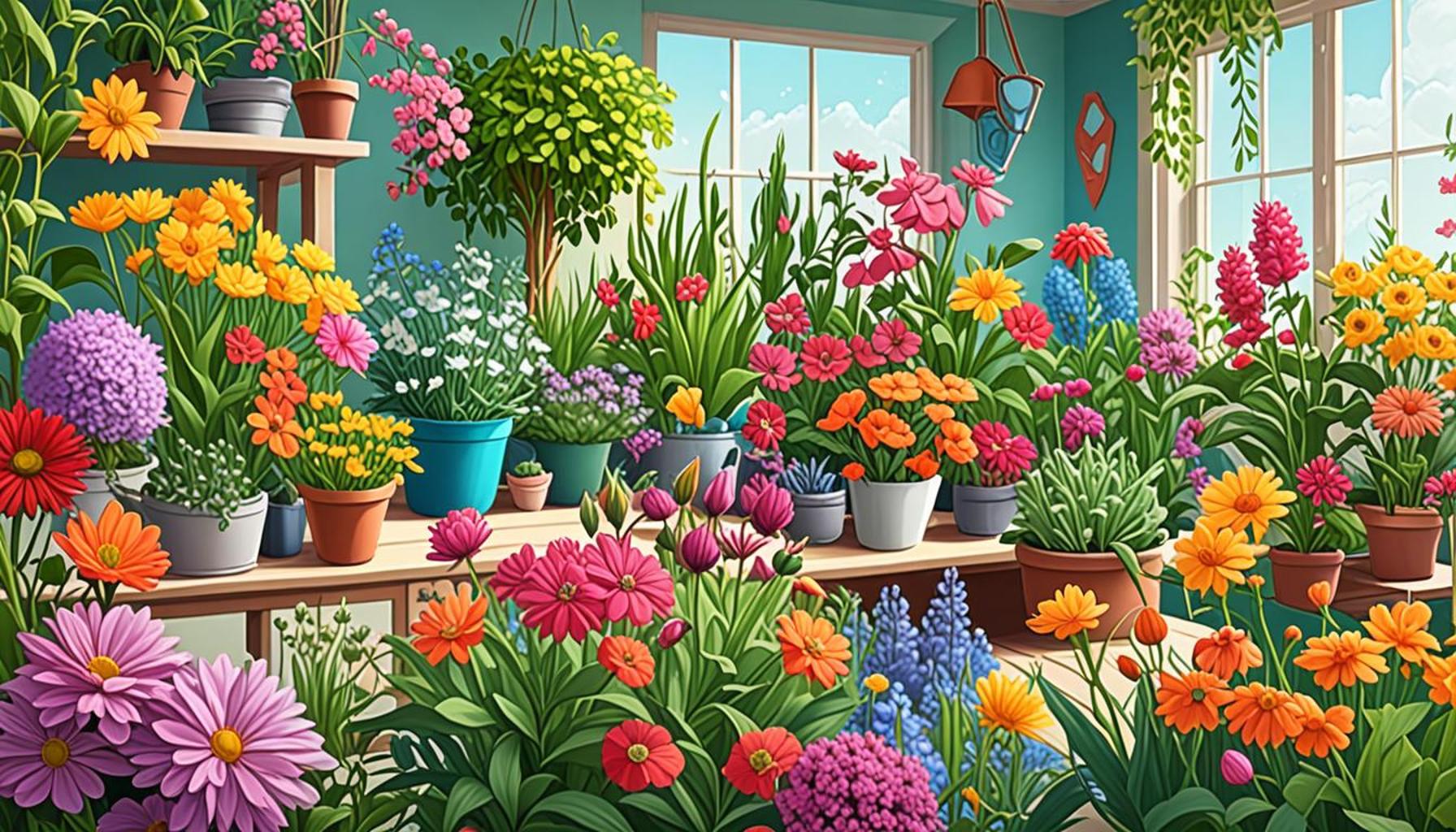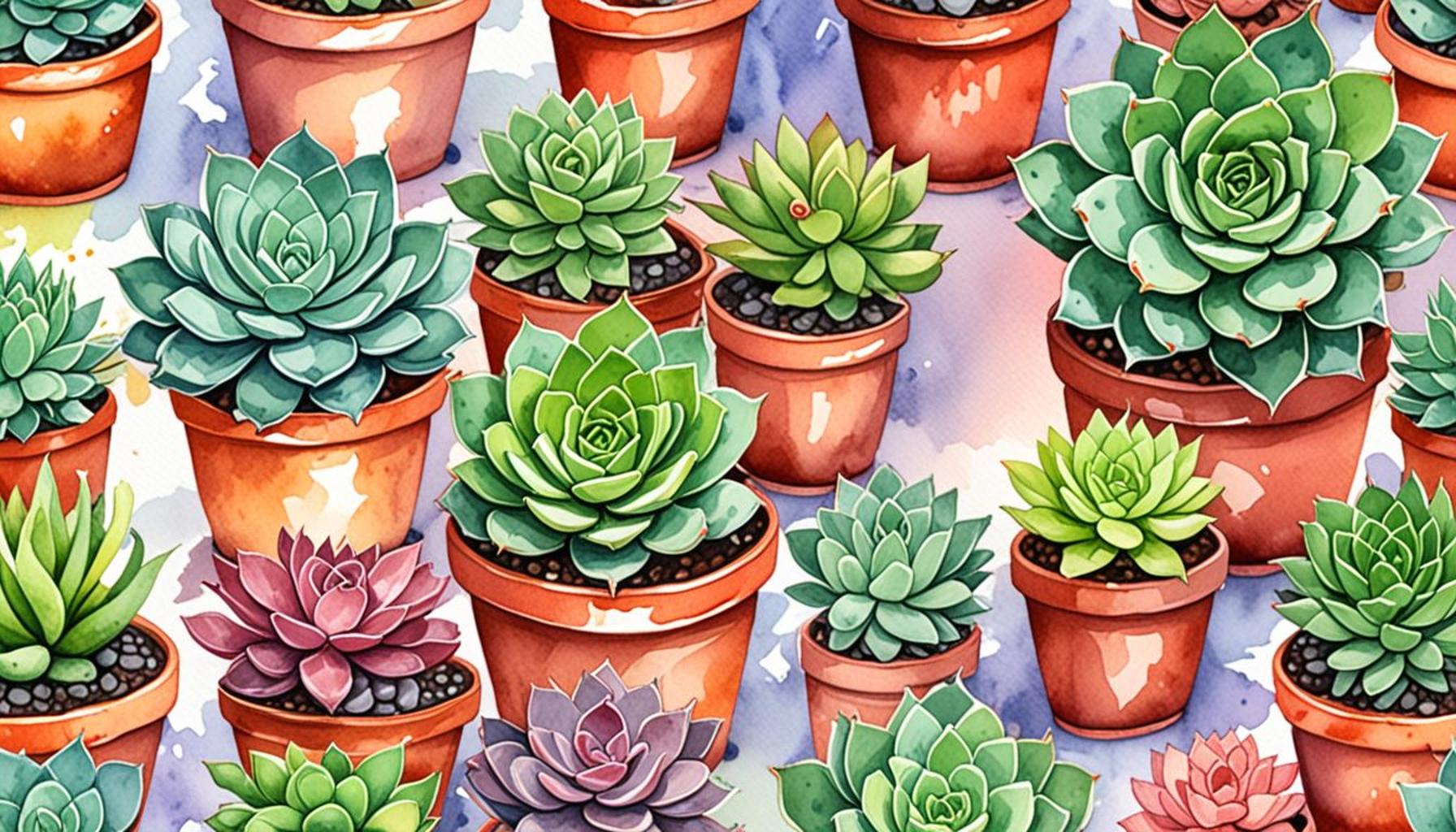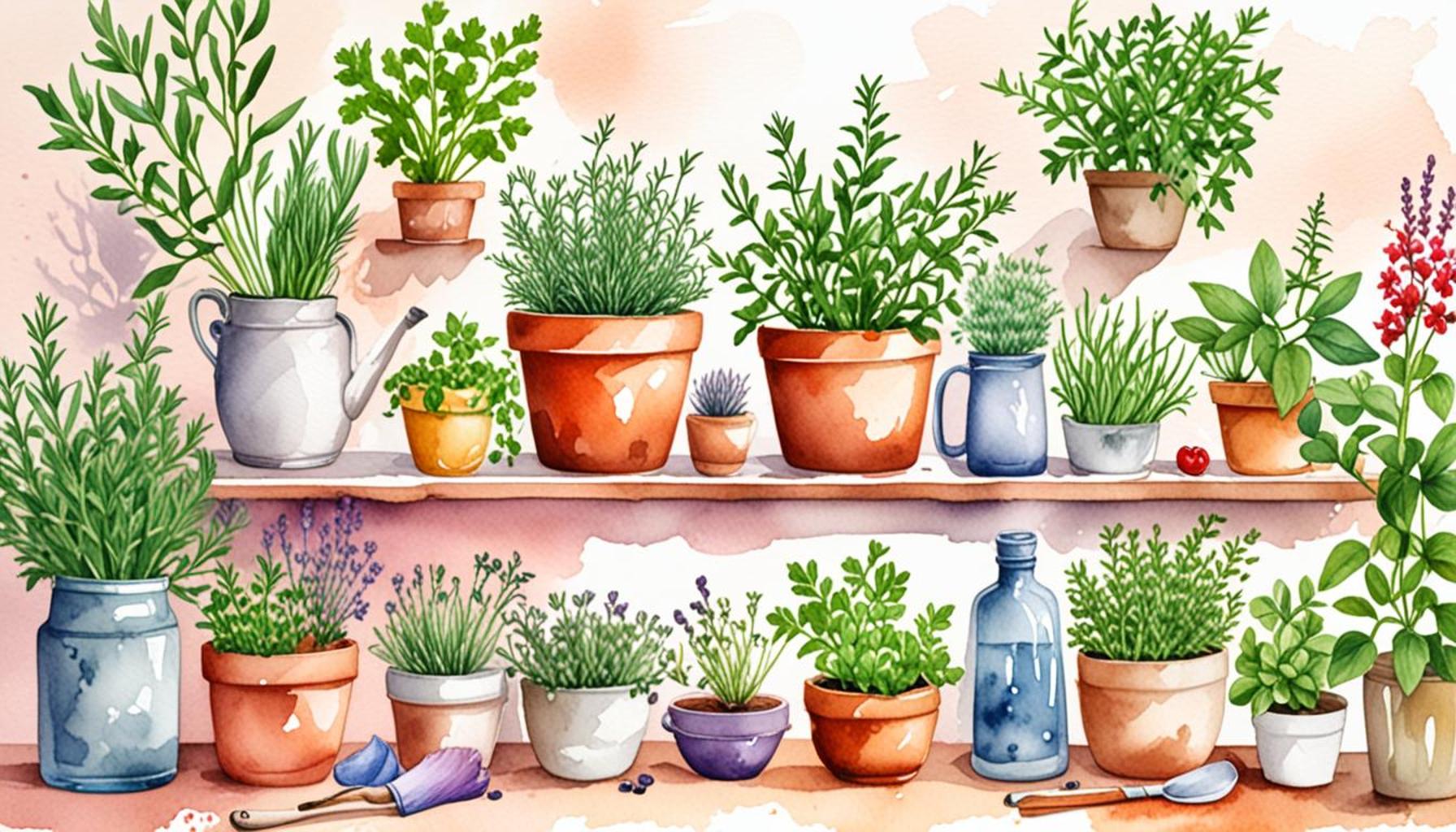How to Choose Perennial Plants That Bloom Year After Year for Beginners

The Beauty of Perennials in Your Garden
Starting a garden can be a rewarding journey, especially when choosing the right plants. For beginners, perennial plants offer a unique advantage: they bloom year after year with minimal fuss. This continuity not only beautifies your landscape but also allows you to develop a deeper understanding of gardening through the seasons. With such a variety out there, the question becomes: how do you select the best perennial plants for your garden?
Key Characteristics to Consider
Understanding key characteristics of perennials can simplify your choices tremendously. By focusing on particular factors, you can ensure that your garden flourishes over time. Here’s a breakdown of critical elements to keep in mind:
- Climate Adaptability: Before making any selections, it’s vital to know your local climate zone. For instance, the USDA Plant Hardiness Zone Map divides the United States into 13 zones, ranging from the warm tropical conditions of Zone 1 to the frigid temperatures of Zone 13. Selecting plants that thrive in your designated zone can enhance their chances of survival and blooming.
- Soil Requirements: Soil is the foundation of any garden, and understanding what type you have is crucial. Soil can be sandy, clay, or loamy, each with different drainage and nutrient-holding capacities. For example, while daylilies are quite adaptable, they prefer well-drained soil, making this consideration essential to gardening success.
- Sunlight Needs: Sunlight plays a significant role in plant health. Observing how much sun your garden receives daily—whether it’s full sun, partial shade, or full shade—will guide your plant choices. For instance, Hostas thrive in shaded areas, while plants like Black-eyed Susans flourish in full sun.
Choosing Native Species
With so many options available in the United States, it’s essential to focus on native species that not only enhance your garden’s aesthetic but also support local ecosystems. Native plants are adapted to the local climate and soil conditions, making them more resilient against pests and diseases, which ultimately reduces the need for fertilizers and pesticides.
Some popular perennial choices for beginners include:
- Black-eyed Susan: These vibrant yellow flowers bloom from summer to fall and are known for attracting pollinators such as bees and butterflies, enhancing biodiversity in your garden.
- Daylilies: Renowned for their resilience and wide array of vibrant colors, daylilies require minimal care and are perfect for novice gardeners. They can adapt to various soil types and conditions, making them almost foolproof.
- Hostas: Ideal for shaded areas, Hostas bring lush foliage and can offer contrasting colors from green to blue. Their heart-shaped leaves provide a wonderful backdrop for more vibrant flowers that may bloom alongside them.
By comprehending these fundamentals, you’ll set yourself up for success in creating a beautiful and sustainable garden. Dive deeper, and you’ll discover the joy of watching your garden come to life with each passing season. With careful planning and consideration of the plant basics, you are well on your way to crafting a thriving outdoor oasis.
DIVE DEEPER: Click here for essential harvesting tips
Essential Tips for Selecting the Right Perennials
Choosing perennial plants that will repeatedly grace your garden with blooms year after year can seem like a daunting task for beginners. However, by understanding a few essential tips, you can simplify the process and create a garden that brings joy for seasons to come. Here are some crucial strategies to employ:
Assess Your Garden’s Conditions
The first step in selecting the right perennials is to thoroughly assess the conditions in your garden. Every location has unique attributes that can significantly influence plant growth. Consider the following factors:
- Moisture Levels: Some perennials thrive in well-drained sandy soils, while others prefer consistently moist conditions. Knowing how wet or dry your garden tends to get will help narrow down your options. For instance, Astilbe flourishes in moist areas, making it an excellent choice for those with damp soils.
- Wind Exposure: In open areas, wind can severely affect delicate plants. Consider choosing perennials with sturdier stems in such environments. Plants like Sedum or Echinacea can withstand windy conditions better than more fragile varieties.
- Microclimates: Sometimes your garden may have varying microclimates, such as protected areas that are warmer or cooler than others. Take note of these subtleties so you can select plants that will perform well in those specific spots.
Flowering Times and Color Schemes
Another exciting aspect of choosing perennials is the opportunity to curate your garden’s blooming calendar. To create a vibrant landscape, consider the following:
- Staggered Bloom Times: To enjoy consecutive bursts of color, select perennials that bloom at different times throughout the season. For example, early bloomers like Creeping Phlox can be paired with midsummer stalwarts such as Coneflowers, followed by late bloomers like Asters.
- Color Coordination: Actively think about the color palette you wish to achieve. Whether you prefer a cohesive color scheme or a cacophony of hues, make informed choices by checking bloom colors and their combinations. Contrasting colors, such as deep purples with vibrant yellows, can create stunning visual interest.
Cultivation and Maintenance
For beginners, it is essential to choose perennials that not only establish well but also require minimal maintenance. Understanding the growth habits of plants will greatly influence your experience as a gardener. Look for:
- Low-Maintenance Varieties: Some perennials, like Lavender and Sedum, thrive on neglect and can handle drought conditions well. By selecting these easy-care options, you can enjoy a beautiful garden without overwhelming demands.
- Disease Resistance: Choose when possible perennials known for their resilience against common pests and diseases. For example, Catmint is not only visually appealing but also tends to resist various garden issues, making it perfect for beginner gardeners.
By evaluating your garden’s unique conditions, considering blooming times and colors, and opting for low-maintenance varieties, you can confidently step into the world of perennial gardening. This structured approach will not only lead you to a thriving garden but also ignite a lifelong passion for nurturing plants through the seasons.
Understanding Perennial Plants
When embarking on the journey of selecting perennial plants that bloom year after year, it’s important to comprehend the unique characteristics that distinguish them from annuals or biennials. Perennials are resilient plants that thrive in specific environmental conditions and often return to life each spring after fading in the winter months. To make the most of your garden, beginners should consider not only the aesthetics but also the climate, soil type, and sunlight conditions that affect plant growth.
Choosing the Right Varieties
Not all perennial plants are created equal, and some varieties are more beneficial for beginners than others. It is essential to select species known for their hardiness and low maintenance. Some popular options include Purple Coneflower, Daylilies, and Black-eyed Susans. These plants are not only vibrant and appealing but also possess a natural resistance to pests and diseases, making them easier for novices to manage. Researching native perennial plants can also lead to a more sustainable garden, as they are typically well-adapted to the local climate and soil conditions.
Planting Techniques and Timing
The timing of planting is crucial in ensuring that your perennials get a strong start. Generally, fall and spring are ideal seasons for planting. Understanding the ideal planting depth and the space required between plants is crucial to avoid overcrowding, which can lead to poor air circulation and increase the risk of disease. Additionally, preparing the soil with organic matter can enhance moisture retention and nutrient availability, essential for thriving perennial gardens.
Maintenance and Care
While perennials are relatively low-maintenance, they do require some care to ensure continuous blooming. Regular watering, especially during dry spells, and mulching can help conserve moisture and suppress weeds. It’s also advisable to deadhead spent flowers regularly to encourage new blooms and prevent the plant from going to seed too early. A simple annual cut-back in the fall will prepare the plants for winter and promote vigorous growth the following spring.With these insights into selection, planting, and maintenance, you will be equipped to cultivate a lasting garden filled with perennial blooms that can flourish for years, enhancing both your space and your gardening skills.
DIVE DEEPER: Click here to learn how to choose the perfect plants for your space
Exploring Popular Perennial Selections for Beginners
Now that you have a foundational understanding of how to assess your garden conditions, choose flowering times, and pick low-maintenance plants, it’s time to dive into specific perennial plants that are ideal for beginners. Selecting the right species can make a significant difference in the success of your garden. Below, you will find recommendations that embody beauty, resilience, and ease of care.
Classic Choices for All Seasons
For those just starting out, some perennials have stood the test of time and continue to dazzle gardeners across the United States. Here are a few classic perennials that thrive and bloom reliably season after season:
- Daylilies: Known for their hardiness and versatile color ranges, Daylilies are a favorite for many. They can adapt to various light conditions and are drought-tolerant once established. With blooms that last only a day, but many varieties flowering throughout summer, they provide a feast for the eyes.
- Peonies: With their lush blooms and sweet fragrance, Peonies are perennial stars in many gardens. They prefer well-drained soil and can thrive for decades with minimal care. Late spring through early summer is when these beauties will put on a memorable display.
- Coreopsis: This cheerful flower, often called Tickseed, is an excellent choice for filling your garden with yellow blooms that appear from late spring to early fall. Coreopsis thrives in poor soils and requires minimal watering—ideal for busy beginners.
Native Perennials for Eco-Friendly Gardens
Beyond aesthetics, choosing native perennials supports local ecosystems and promotes biodiversity. Here are a few native species that excel in gardens:
- Black-Eyed Susan (Rudbeckia hirta): This vibrant yellow flower is not just eye-catching; it attracts pollinators like bees and butterflies. It adapts well to a variety of soil conditions and blooms from summer into fall, ensuring your garden remains lively.
- Butterfly Weed (Asclepias tuberosa): With its bright orange flowers, Butterfly Weed is a magnet for monarch butterflies. It thrives in drought-like conditions, making it another low-maintenance option perfect for beginner gardeners.
- Wild Bergamot (Monarda fistulosa): This aromatic plant produces lovely purple flowers that bloom in the summer, attracting hummingbirds and butterflies alike. It tolerates a range of soil types and provides a fragrant addition to the garden.
Seasonal Interest and Foliage
While flowers are often the main attractions, many perennials offer stunning foliage that adds texture and depth to your garden design. A combination of flowering and foliage plants can ensure year-round appeal. Consider:
- Hostas: Renowned for their lush, leafy textures, Hostas can brighten shady areas of your garden. They bloom with fragrant spikes of flowers in summer, but their leaves remain a focal point throughout the growing season.
- Heuchera (Coral Bells): With its array of colorful foliage, Heuchera is perfect for borders and containers. The tiny bell-shaped flowers are a bonus that blooms in late spring and early summer, adding variety to your garden.
By choosing from these popular and effective perennial options, you can effortlessly build a garden that is vibrant and inviting. Focusing on a mix of classic selections, native plants, and varieties with beautiful foliage will ensure your space is continually filled with life and color, making gardening a rewarding experience!
DIVE DEEPER: Click here to discover essential tools for soil preparation
Conclusion: Cultivating Your Perennial Paradise
As we wrap up our exploration of selecting the right perennial plants for your garden, it’s clear that creating a flourishing outdoor space can be both fulfilling and manageable for beginners. By understanding your garden’s unique conditions, the importance of bloom times, and incorporating a variety of native and classic selections, you can establish a thriving landscape that rewards you year after year.
Careful planning is key; by selecting plants like Daylilies, Peonies, and Coreopsis, you can ensure vibrant colors and lasting beauty. Adding native options such as Black-Eyed Susans and Butterfly Weed not only enhances your garden’s aesthetic appeal but also supports local wildlife and promotes biodiversity. Incorporating a rich tapestry of foliage plants, such as Hostas and Heuchera, further enriches your garden, ensuring it remains captivating through all seasons.
Ultimately, gardening is a personal journey that celebrates creativity and nature. Keep an open mind, explore new varieties, and don’t hesitate to learn from your experiences. Each blossom and leaf tells a story of growth and resilience. With the right perennials, your garden can become a lasting sanctuary, filled with color and life that brings joy to both you and your neighborhood. So, roll up your sleeves, dig into that soil, and start your adventure in creating a perennial paradise!


